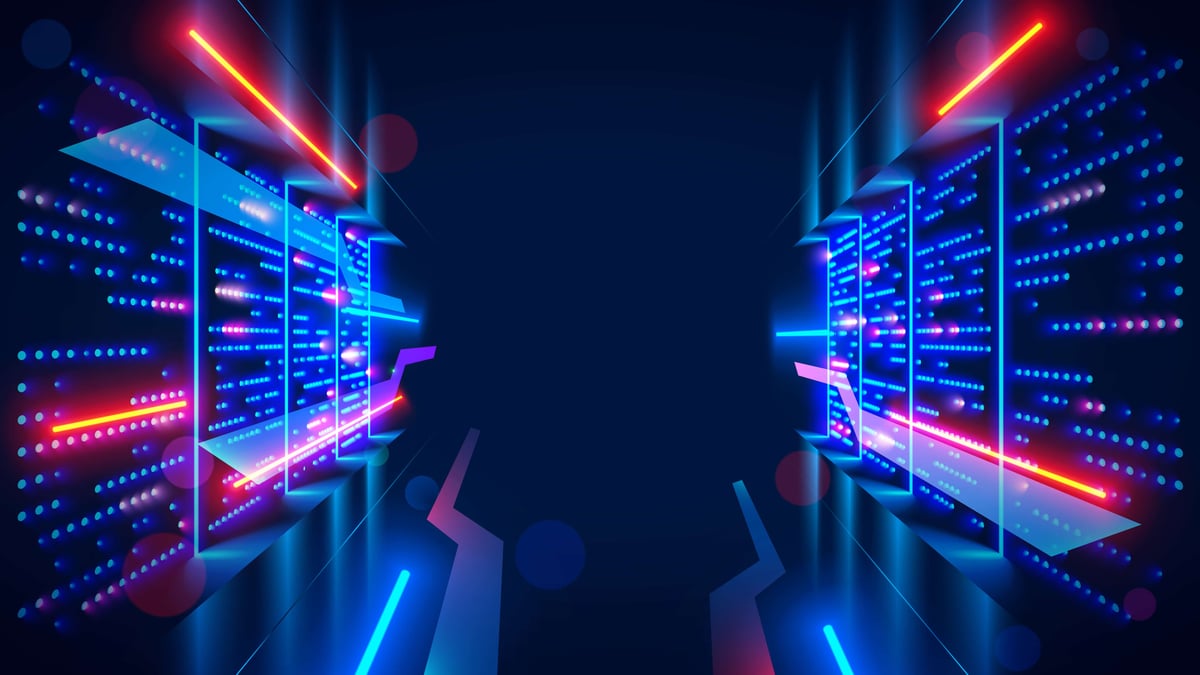The data center industry is experiencing unprecedented transformation driven by multiple factors—from AI workloads and power constraints to economic pressures. Through their work with clients across various sectors, Align's experts have observed five key trends that are reshaping infrastructure requirements and operational strategies.
These changes reflect a fundamental shift in how organizations must approach data center design, operation, and management. In this blog, we'll explore each trend and what Align experts are seeing on the ground as they help clients navigate these industry shifts.
Power Capacity Challenges & Sustainable Solutions
Power challenges in major data center hubs have reached a critical point, with Align experts witnessing this crisis firsthand. In response to these challenges, the industry is exploring creative solutions. Many clients are now considering expansion into secondary and tertiary markets where power is more readily available. Additionally, some data center operators and hyperscalers are engaging in early discussions about small modular nuclear reactors (SMRs) as a potential future power solution. While still far from implementation, these conversations demonstrate how critical the power challenge has become in major data center markets.
“As the industry investigates these longer-term solutions, our experts are helping clients focus on a more immediate approach: sustainability through efficiency. Through improved power utilization efficiency, data centers can potentially gain 30% extra power capacity.”
– Simon Eventov, Assistant Director, Data Center
This can be achieved by upgrading equipment, building better containment systems, and implementing more efficient power and cooling management. These improvements don't just benefit the environment – they're becoming essential for operational viability.
Liquid Cooling: From Option to Necessity
“Liquid cooling, once considered a niche solution, has become increasingly crucial as traditional air-cooling struggles to keep up with modern computing demands.”
– JJ Gernaat, Project Manager
Just to give a quick overview, liquid cooling uses fluids to remove heat from components through direct contact or heat exchangers, which offers significantly better thermal management than traditional air-cooling methods.
In working with clients, Align has implemented a variety of liquid cooling solutions, including Direct to Chip (DTC), Rear Door Heat Exchangers (RDHX), and hybrid deployments. While the transition to liquid cooling presents initial challenges in infrastructure modification and staff training, the benefits are game-changing. As liquid cooling becomes standard in the white space, Align's experts emphasize the importance of careful design coordination, leak detection systems, trade stacking, and managing material lead times. Organizations implementing these solutions report not just better thermal management but also improved energy efficiency and the ability to support higher-density computing environments essential for AI workloads.
Processor & Network Evolution
The introduction of NVIDIA's Blackwell chip exemplifies the processing challenges facing modern data centers. While the chip offers four times the efficiency of its predecessor (the H100), its ten times increase in processing power ultimately results in higher net power consumption. This paradox – improved efficiency leading to increased overall power usage – is becoming a common theme in data center evolution.
“On the networking front, AI workloads are driving organizations toward advanced technologies like InfiniBand to handle massive data transfers. These high-speed networks are becoming essential for supporting the increased data movement between AI processors while maintaining the low latency these applications require.”
– Rodney Willis, VP of Sales and Sourcing, Data Center
Retrofitting: New Data Centers Can't Be Built Fast Enough
The data center industry faces a critical capacity challenge: new facilities simply cannot be built fast enough to meet soaring demand. This has made retrofitting existing data centers crucial. Align experts have also identified another significant trend: even relatively modern facilities need major upgrades, as they weren't designed to support today's higher density workloads.
“The upgrading/retrofitting challenges range from floor loading weight limitations to power density constraints and a lack of liquid cooling infrastructure. Align regularly helps clients upgrade their facilities to support new loads, particularly for AI infrastructure.”
– James Braja, Senior Project Manager
The most successful approaches typically involve strategic upgrades to power distribution systems - such as transitioning from 208V white space distribution to 415V to the rack for higher densities and better efficiency. For cooling challenges, Align experts have implemented various smart solutions that enable advanced cooling methodologies in facilities where the heat load rejection exceeds the original design capabilities, including air-to-liquid options, CDUs, and in-row or in-cabinet solutions.
Economic Pressures and Opportunities
The financial landscape for data centers is becoming more complex. For example, Broadcom's shift to a perpetual licensing model has created significant budget strains for enterprises, forcing them to seek cost savings elsewhere. Meanwhile, new opportunities are emerging through tax incentives, as seen in New Jersey's recent data center investment initiatives. These economic forces are reshaping how organizations approach their data center strategies.
There is an outpouring of investment coming into the industry looking to capitalize on the current data center boom. Various new providers who have available space and power are popping up to support speed to market demand. A great example is the recent announcement of DAMAC Properties commitment to at least a $20 billion dollar investment to build data centers in the US.
Looking Ahead
As these trends continue to reshape the data center landscape, organizations need experienced partners to navigate the complexities of modern infrastructure. Align's expertise in each of these areas positions us to help clients adapt in this evolving environment. Contact us to learn how we can support your data center transformation journey!



